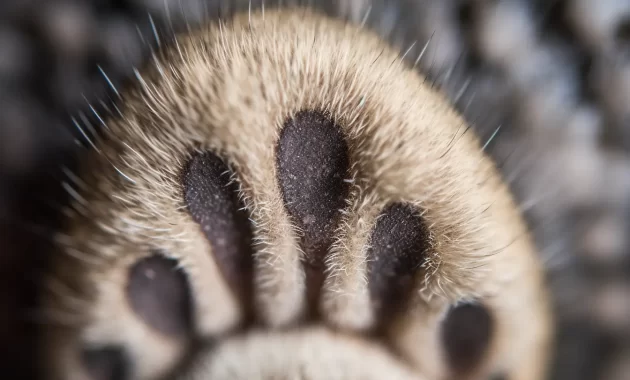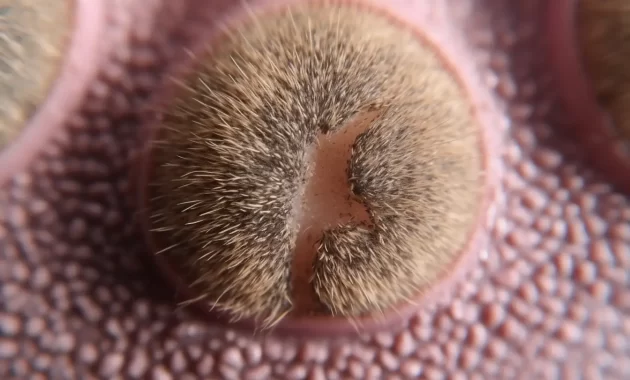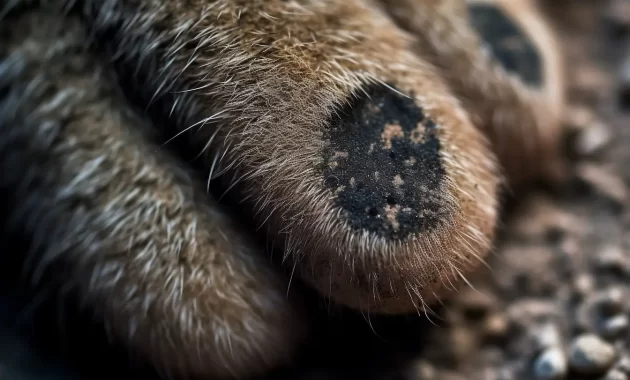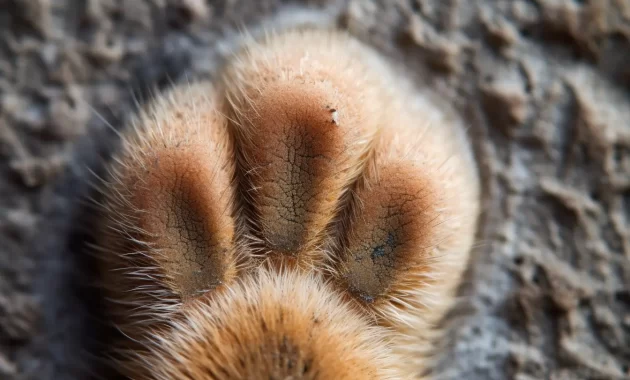
Have you ever heard of a polydactyl cat? No? Well, let me introduce you to this one-of-a-kind feline.
If you’ve been looking for a unique pet that provides endless entertainment and companionship, a polydactyl cat might be the perfect choice!
Polydactyl cats are known for their extra toes, giving them an adorable and unique look that will bring plenty of joy into your home.
But beyond their appearance, polydactyl cats also have personalities that make them enjoyable and loving pets.
So if you’re looking for a furry friend who is both quirky and affectionate, then a polydactyl cat is worth considering!
Table of Contents
- What Is A Polydactyl Cat?
- The Physical Characteristics Of A Polydactyl Cat
- The Personality Traits Of A Polydactyl Cat
- Caring For A Polydactyl Cat
- Finding A Polydactyl Cat
- Frequently Asked Questions
- Conclusion
What Is A Polydactyl Cat?

Have you ever heard of a polydactyl cat? This unique breed has captivated people for centuries with its extra toes and quirky personality.
A polydactyl cat is like a four-leaf clover – rare and charming! As the name suggests, these cats have more than five toes on their paws, making them truly one of a kind.
The history of the polydactyl cat dates back to the 19th century in North America when sailors brought cats on board to hunt mice.
These cats are believed to have an extra toe due to a genetic mutation passed down from generation to generation.
Over time, this gene became more prominent in certain breeds, resulting in what we now consider the polydactyl breed.
Today, the polydactyl cat has become increasingly popular due to their unique features and personalities.
They are known for being loyal and friendly companions who quickly develop strong bonds with their owners.
The polydactyl cat may be correct whether you want an affectionate pet or something different!
SEE ALSO
Cat Food – What Can I Give My Cat To Eat Besides Cat Food
15 Cat Breeds White and Black: What You Need to Know
The Physical Characteristics Of A Polydactyl Cat

Polydactyl cats, also known as “mitten cats” or “thumb cats”, are a breed of cats that have extra toes on their paws.
They can have anywhere from five to seven toes on each foot!
Thesfootxtra digits give the cat’s paws an almost human-like shape, with the outermost toes resembling thumbs – hence their nicknames.
The physical characteristics of polydactyl cats make them stand out from other breeds.
While most cats have four toes and one dewclaw on each front paw, polydactyls can have more than one dewclaw and extra toes on one or both feet. The other toes can be found on any cat’s feet, not just their front ones.
As well as having a unique paw shape, these cats often have a larger-than-normal body size than other breeds due to the extra bones in their feet.
These extraordinary felines will bring unique charm and character into your home.
Whether it be their quirky paw shape or larger-than-normal physique, no two polydactyls are ever alike!
Adopting one of these fantastic creatures will surely be an unforgettable experience you won’t forget.
The Personality Traits Of A Polydactyl Cat

Polydactyl cats are known for their unique physical characteristics: having extra toes on their paws. But this feline breed also has a distinct personality that differentiates them from other cats.
Polydactyl cats are known to be highly social and affectionate, often preferring the company of humans or other animals over being alone.
They have an outgoing and playful nature, making them ideal companions for those looking for a pet with an active lifestyle.
Grooming needs for polydactyl cats are relatively low due to their short fur coat.
However, they require regular brushing and nail trims to keep their nails healthy.
Socializing habits should be encouraged in these cats as early as possible; they can become shy and withdrawn around new people or environments if they’re not allowed to interact with humans and other animals.
Overall, polydactyl cats are an excellent fit for owners who enjoy spending quality time with their pets.
They thrive when given attention, whether playing with toys or snuggling on your lap during movie night.
With proper care and socialization, this unique breed will be a loyal companion you’ll cherish for many years.
Caring For A Polydactyl Cat
Caring for a polydactyl cat is not all that different from caring for any other cat. It is important to remember, though, that their extra toes require a bit more attention when it comes to hygiene and nail clipping.
| Feeding Needs | Veterinary Visits | Hygiene & Nail Care |
|---|---|---|
| Dry & Wet Food | Annually | Regularly |
| Treats | Vaccines | Attention to Toes |
As with all cats, polydactyl should have regular access to fresh water and good quality wet and dry food.
Treats can also be given in moderation. Veterinary visits should occur at least once a year to ensure the cat stays updated with their vaccines.
During these visits, your vet will also check the health of the cat’s extra toes.
Hygiene and nail care are essential for those with additional digits; nails must be trimmed regularly to avoid any problems or discomfort resulting from them being too long.
As such, a polydactyl’s owner must pay close attention to the health of its paws while grooming.
Caring for a polydactyl cat is no different than caring for any other type of feline companion—keep an eye on those extra digits!
With proper care and maintenance, you can have a happy and healthy pet who will undoubtedly bring joy.
Finding A Polydactyl Cat
Polydactyl cats, often called “mitten cats” or “thumb cats”, are some of the most unique and captivating felines.
They boast extra toes on their feet, sometimes up to seven toes on each paw!
This rare trait is not only eye-catching, but it also makes them incredibly agile and excellent climbers.
Adopting a polydactyl cat can be an exciting experience.
They come in all shapes and sizes and have personalities that make them stand out. Polydactyl could be the perfect choice if you’re looking for a new pet.
Before adopting your fur baby, it’s always important to do your research first.
Talk to breeders specializing in polydactyl cats and ask for tips about what to look for when selecting one.
Ask questions about their health history and temperament to know you’re getting the best companion possible.
With the right amount of research and preparation, you can ensure that you bring home a healthy and happy polydactyl who will become an incredible addition to your family!
Frequently Asked Questions
Is A Polydactyl Cat More Expensive Than A Regular Cat?
The cost of owning a polydactyl cat versus a regular cat largely depends on the individual situation.
Generally, adoption fees or rescue costs for a polydactyl cat may be slightly higher than those of a regular cat due to the unique nature of the breed.
However, when it comes to the long-term costs of owning a cat, such as grooming and veterinary care, there is no difference between a regular and a polydactyl cat.
So if you’re looking for an extra-special furry companion without breaking the bank, adopting a polydactyl cat could be the perfect choice!
Are Polydactyl Cats More Prone To Health Issues?
When it comes to polydactyl cats, the extra toes may be cute, but they can come with their own set of health issues.
The genetic mutation that causes the extra digits makes them more prone to specific problems than regular cats.
Extra care must be taken to ensure their paws are trimmed regularly and prevent infections.
As a pet expert or cat specialist, I advise owners of polydactyl cats to monitor their pet’s health more closely and take preventative measures when needed.
What Is The Average Lifespan Of A Polydactyl Cat?
The average lifespan of a polydactyl cat is approximately the same as that of any other domestic cat.
However, specific genetic implications and behavioural traits may affect this.
Polydactyl cats are known to be more active than their non-polydactyl counterparts, so the additional activity could potentially shorten their lifespan.
Also, polydactyl cats have a higher rate of specific health issues that can reduce their life expectancy.
That said, with proper nutrition and frequent vet checkups, a polydactyl cat can live as long and happy a life as any other cat!
Can Polydactyl Cats Be Trained To Do Tricks?
Ahoy, me hearties!
Believe it or not, polydactyl cats, known as ‘mitten cats’ due to their extra toes, can be playful and enjoy socializing.
TIt’sraining them to do tricks with the right tips and tricks is possible. You can teach your furry mitten friend to sit, fetch, and even shake hands with patience and creativity.
Polydactyl cats are like any other cat: they love interactive playtime, enjoy treats for good behaviour, and respond well to positive reinforcement.
With these socializing tips in mind and plenty of patience, even the most playful polydactyl cats can learn new tricks.
Are Polydactyl Cats Good With Children?
Polydactyl cats make excellent companions for children, as they are naturally playful and social.
They love to engage in interactive play and have excellent socialization skills, making them ideal pets for children.
Additionally, these cats are known to be very patient, loyal and trusting – making them an even more ideal pet for a child.
With proper care and attention, these cats can form strong bonds with their owners, regardless of age.
Conclusion
Polydactyl cats are a unique and wonderful breed of cat that make great companions.
They are often more expensive than regular cats, but the extra cost is worth it for a lifetime of love and entertainment.
Polydactyl cats can live as long as any other cat with proper care and attention.
They can also be trained to do tricks, which makes them even more fun to have around!
Lastly, polydactyl cats are good with children and make excellent family pets.
All in all, if you’re looking for an exciting pet with a lot of personality, look no further than the polydactyl cat!




